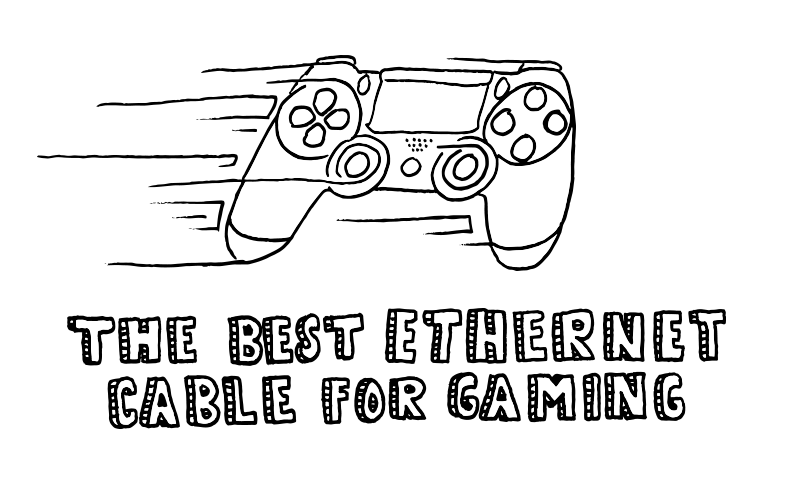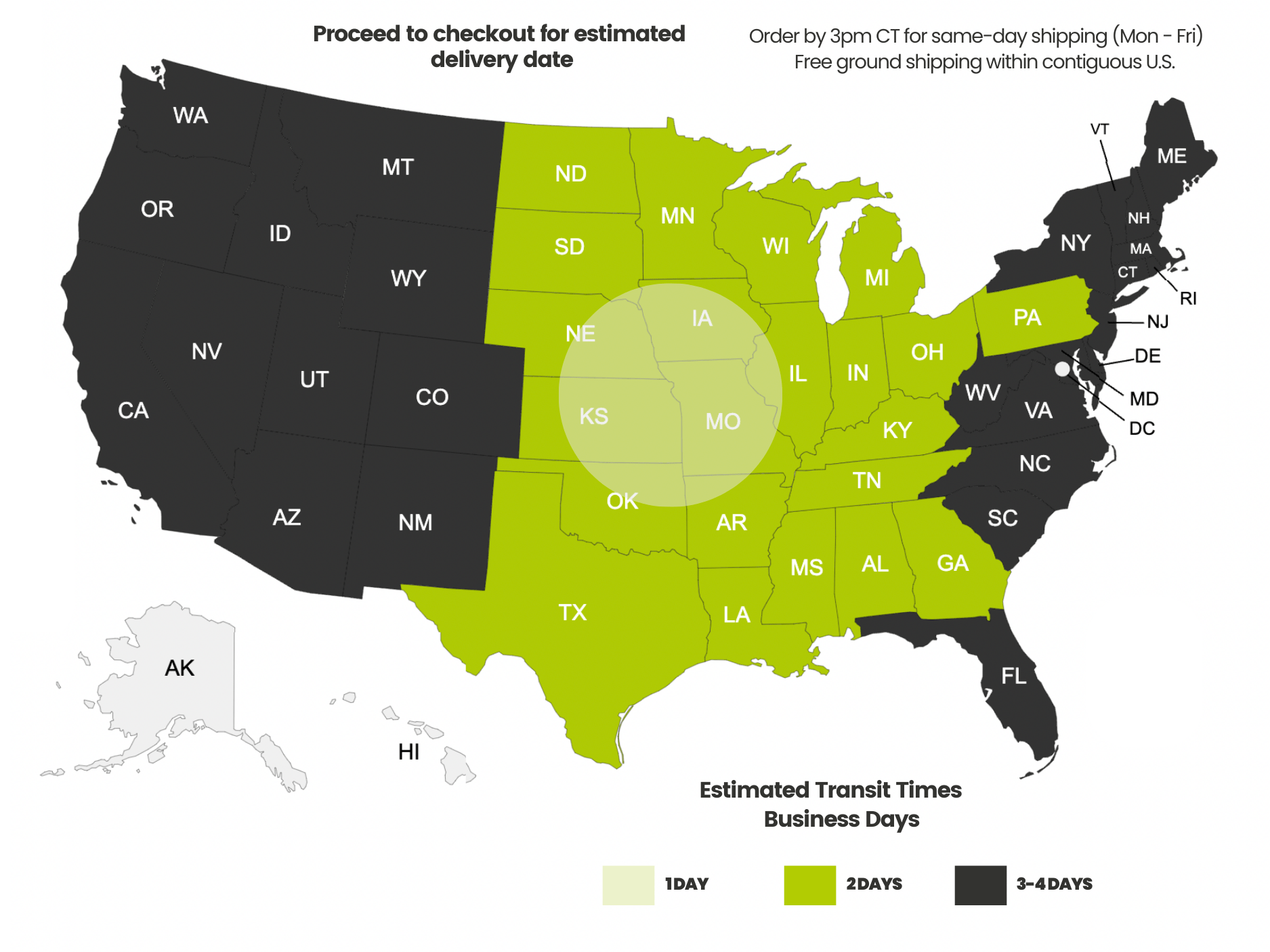Payment methods accepted

The Best Ethernet Cable for Gaming in 2024!
Written by Don Schultz, trueCABLE Senior Technical Advisor, Fluke Networks Copper/Fiber CCTT, BICSI INSTC, INSTF Certified
You want to frag—not lag! Pick the wrong Ethernet cable or use the wrong technology, and you may get killed on the virtual battlefield fast. You can spend far too much on the wrong things, go the wrong direction with the right things, and get taken in by flashy marketing claims. You don’t want that, and neither do I.
So, let’s talk first about some of the major mistakes to avoid. These are the types of mistakes that can cost you too much time, money, and hassle.
What NOT To Do if You Want a Reliable Gaming Experience
You already likely know that WiFi is an inferior way of gaming online when compared to wired internet. WiFi, even in the best low interference environments, is subject to much higher latency and ping times due to the additional error checking mechanisms employed. This affects any variation of WiFi, even the latest technology. If reliability concerns are taken into account, then WiFi is the last technology you want to use. Even with the latest WiFi technology such as WiFi 6, WiFi 6E and WiFi 7, environmental interference will always remain an issue. The highest quality gaming experience achievable (with games where one player connects to another via a network) will always be over a wired connection. See more about this here: Ethernet vs WiFi, Is Wiring your Network Worth It?
Solid copper Ethernet is very good for in-wall and permanent run installations, but is NOT a good choice for cabling that may be frequently handled. In short, avoid the mistake of making your own patch cords from solid copper Ethernet unless you have a very specific reason for doing so and you know what you are doing! The terminations are a huge weak point. See Terminating Pass-Through RJ45 Connectors onto Solid Copper Ethernet Cable -- A Really Bad Idea? for a highly technical read about this.
Solid Copper vs Stranded Copper Ethernet Cable
So, you now know that you want to use Ethernet LAN patch cable to get setup. It might help to explain what we mean by “patch cable” as opposed to “bulk solid copper.”
Ethernet patch cables are already terminated with 8P8C (aka RJ45) connectors. Bulk solid copper Ethernet must be cut to length and terminated by an installer, preferably to keystone jacks and patch panels. In addition, Ethernet patch cables are constructed using stranded copper conductors as opposed to solid core ones. This means patch cords are designed to be flexed, as they’re expected to withstand repeated plugging and unplugging.

Ethernet patch cord

Sold Copper Bulk Ethernet cable
Counterfeit Cable Alert!
Here is an industry quote:
“To get an idea of equipment cord quality, the Communications Cable and Connectivity Association (CCCA) completed large-scale, electrical performance testing of Category 6 copper patch cords, which tested nearly 500 samples that included 379 cords from offshore, lesser-known manufacturers and 120 cords from well-known North American manufacturers. Of the 379 offshore patch cords, 322 of them failed electrical performance parameters specified in TIA 568-C.2 standards with 78% failing by a margin of 3dB or more and 45% failing by a margin of 6dB or more. These cords would have likely led to significant network problems once included in the channel. All the patch cords from recognized North American manufacturers showed 0% failure rate.”- Fluke Networks
trueCABLE tested this statement and we found out not only is it true, it is likely understated! Would it surprise you to find out that a high quality lower Category rated patch cord will likely dramatically outperform a poor quality high Category “rated” patch cable? Before you read this blog further, I strongly suggest you watch:
Best Ethernet Cable to Buy
Which Ethernet cord, though? The short answer is the best Ethernet cable for XBox is the same as the best Ethernet cable from modem to router or other common tasks. Performance to each device in the chain is extremely important, as any weak links will impact your gaming prowess. When making a purchasing decision, always purchase high quality Component Rated and Certified patch cables from reputable brands. These patch cables will cost a bit more than your typical imported mass market ones, but you really do get what you pay for. Higher Category ratings, shielding, and other features likely won’t benefit you for a variety of reasons and we will discuss those topics further below.
This blog assumes you are using an Ethernet patch cable (stranded copper) plugged directly from your switch or WiFi router directly into your high end gaming PC or PS5 (maybe XBox?) console. In other words, you are not making use of a structured cabling system. If you have a properly constructed structured cabling system then great, but be sure you pick a good quality patch cord and that is the next area where you can very easily make a mistake.
The market is flooded with Ethernet patch cables. Most of them are utter garbage not worth buying.
You can buy patch cords round, flat, shielded, and with any number of fancy frills. Each one claims to be better than the next. Talk about confusion! Well, let’s unravel this giant ball of cabling, shall we?
Picking a Category
Category defines, essentially, how fast the Ethernet cable will go reliably given several variables such as:
- Distance, with ambient temperature limitations applied
- Stranded or solid copper conductors (solid goes farther more reliably)
- Your equipment and ISP speeds (MOST important factors)
Surprisingly, Ethernet cable has been ready for a long time and application speeds (such as 1G, 2.5G, etc.) built into equipment are only just beginning to catch up. Match the correct Category to your equipment needs with a (little bit) of an eye towards future expansion. Here is the truth: Category is the LEAST important decision for you to make in a residential environment. No, you don’t need Cat7 or Cat8, and probably not even Cat6A for short distances. They get you nothing. Here is a table illustrating what I mean:

Take a close look at the above table. Notice a trend? You will always be limited by the slowest component in the network. Usually, it won’t be your Ethernet cable! Even lowly Cat5e handles your typical Internet fragging with ease, and most ISP speeds are 1G or less. Some are reaching 5Gbps, however. So, Category is not really a major consideration unless you require faster internal network (LAN) speeds to go from a NAS (network attached storage) to a PC for fast file backup or you are sharing large video files from one machine to another for editing.
Final Analysis on Category: Pick Cat6 as it will cover you now and well into the future unless you are doing something special such as a home A/V editing setup with multiple workstations or even servers specially designed and required to go 10Gbps or faster.
Do I Need Shielded Ethernet?
This will be a short section. 99% of the time, the answer is no.
Shielded Ethernet cable:
- Will not increase your LAN speeds
- Is more difficult to route and handle
- May introduce unintended consequences such as ground loops or floating cable shields
Final Analysis on Shielding: Only use shielded Ethernet when you know you have an issue and need to avoid it, and be prepared to properly bond your cable run to ground.
Which Cable Jacket Do I Need?
For indoor residential applications, pick CM (Communications), CMG (Communications General), or CMR (Communications Riser rated). If your Ethernet cable is running indoors and outdoors, you just signed up for a much tougher project and likely need longer Ethernet runs anyway. Take a look at Selecting the Correct Outdoor Ethernet Cable for more information. If this installation is in a commercial space, the ball game (and laws!) may be far different and you should take a look at Facts About Ethernet Cable Jacket Ratings.
Final Analysis on Cable Jacket Type: For indoor residential (or even commercial) same room connections, use CM/CMG or CMR. For anything else, your choice might depend on what you are doing.
Are Thin Ethernet Patch Cords OK to Use?
A trend as of late is to start making patch cords thinner. The idea is to increase ease of routing in patch panels, server racks, modular furniture and the like. You can increase installation density if you can fit more cables into something, essentially.
That said, there is a point of diminishing returns. As the stranded copper conductor gets thinner in order to make a thinner patch cable, you cannot go as far or handle as much current for PoE. The ANSI/TIA 568.0-E standard allows for patch cords to use stranded copper conductors as thin as 28AWG. As the number goes higher, the conductor gets thinner. 30AWG and 32AWG patch cords are NOT per the specification and should be avoided. Typically, patch cords are seen using stranded copper conductors from 24AWG to 28AWG with 26AWG being most common. Here is a handy chart that shows the absolute maximum patch cord lengths, using stranded copper conductors:

Notice a severe length reduction as soon as we move to a thinner gauge, especially from 26AWG to 28AWG? As copper gets thinner its ability to reliably transmit a signal decreases exponentially, not linearly. Category is not relevant.
Other Things to Look Out For
- Do not pay more for outlandish marketing hype and claims of extreme performance. The flashier the packaging, the more suspicious you should be. Some of the best patch cords, worthy of the Category printed on them, are in very ordinary bags.
-
Avoid unknown manufacturers. Beware of reviews that are paid or seem suspicious. Do some research and learn to avoid nonsense claims.
-
The ANSI/TIA 568 specification, surprisingly, does not require patch cords to be stamped with their Category. You should, however, be sure it says cETLus or UL Listed. The cETLus and UL Listed marks are for fire safety, meaning the cable passed vertical flame and perhaps even smoke testing for the jacket rating. Also be sure CM (something) is printed on the cable, as that is the actual rating for the jacket.
- Cat7 patch cords, unless terminated with GG45 or TERA connectors, are absolutely counterfeit 100% of the time. Cat7 is not a North American recognized cable Category and actually falls under European-Asian ISO/IEC 11801 standards. In said standard, 8P8C (aka RJ45) connector plugs are not used.
- Cat8 is designed to be used for short (98 foot) equipment connections in data centers that require 40Gbps and there are no other options than to use copper for the task. If you really need faster speeds than 10Gbps, you should be looking at fiber optical solutions and not copper Ethernet.
In Conclusion
Well, there you have it! Picking a patch cord is not quite as straightforward as heading to the store and grabbing the least costly one or even the most expensive one. You are very likely to purchase a bad patch cord even if you massively overspend, and I have been the victim of that. I don’t wish to see anyone else go through some of the pain I have experienced, and that is why we educate. Of course considering trueCABLE sells patch cords you may consider this a biased statement, but after having spent two years developing and testing patch cords I will say with confidence that you can buy ours and be confident you won’t have an issue.
HAPPY NETWORKING!
trueCABLE presents the information on our website, including the “Cable Academy” blog and live chat support, as a service to our customers and other visitors to our website subject to our website terms and conditions. While the information on this website is about data networking and electrical issues, it is not professional advice and any reliance on such material is at your own risk.



























